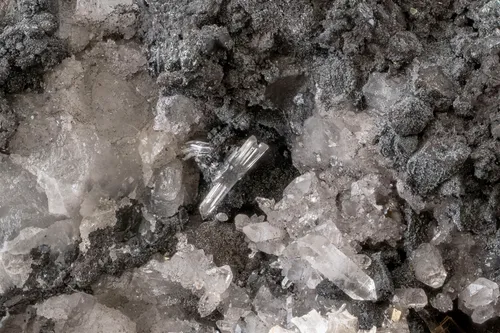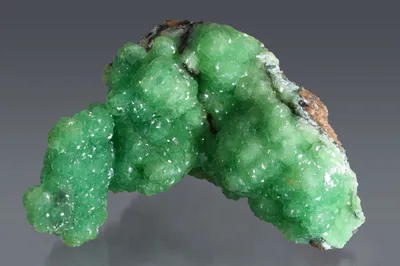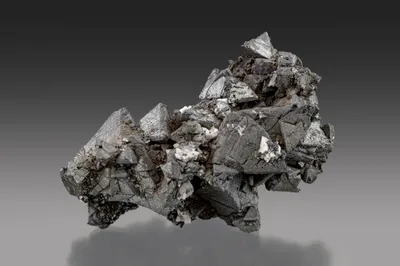
Image Credit: Malcolm Southwood
Mineral Species
Stibioclaudetite
Type Locality
Yes
Composition
AsSbO3
Crystal System
Monoclinic
Status at Tsumeb
Confirmed (type locality)
Abundance
Very rare
Distribution
Second (?) and third (?) oxidation zones
Paragenesis
Supergene
Entry Number
Species; TSNB331
Type Mineralogy
A specimen of leiteite with ludlockite, quartz, and crystals (to 6 mm) of a colourless unidentified mineral was obtained by the late Bill Pinch (1940-2017) who submitted it for further study. Raman spectroscopy failed to produce a match to any known mineral species and EDS indicated the presence of only antimony and arsenic. Further investigation led to the submission and approval of IMA 2007-028, which was named stibioclaudetite in allusion to its composition and structural relationship with claudetite (Origlieri et al. 2009). Type material is conserved at the Smithsonian Institution in Washington D.C. (catalogue number 174550).
General Notes
The location in the mine from which the type material for stibioclaudetite was recovered is not known precisely. Leiteite has not been recorded in the first oxidation zone but occurs in both the second and third oxidation zones. Based on the observed paragenesis of stibioclaudetite, with leiteite, ludlockite, quartz and smithsonite on a tennantite-rich sulphide matrix, Origlieri et al. (2009) suggested that the type specimen may be from a different occurrence than either the leiteite type assemblage of the second oxidation zone or the "Zinc Pocket" and associated occurrences of the third oxidation zone.
Stibioclaudetite forms colourless, bladed crystals (to 6 mm) with dominant forms {010} and {110}, prominent {111} and very minor {101}; it is transparent with an adamantine lustre (Origlieri et al. 2009).
Stibioclaudetite is readily confused with claudetite or leiteite and analysis is required for certain identification.
Associated Minerals
leiteite; ludlockite; quartz; smithsonite; tennantite-(Zn)




